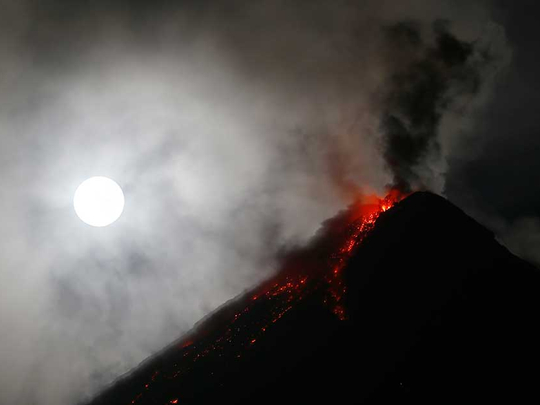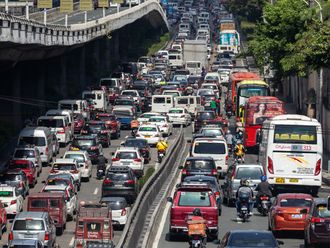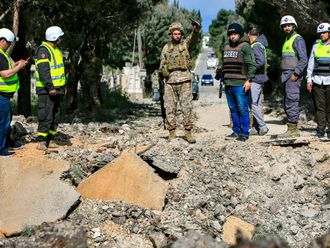
Manila: Despite apparent simmering down of volcanic activity over the past couple of days, the threat of an explosive eruption for Mayon continues to be a possibility.
State geologists said while sulphur dioxide gas being emitted from the volcano crater has lessened the threat of an actual continuing eruption of Mayon remains a distinct possibility.
“Sulphur dioxide gas emission was measured at an average of 1,583 tonnes per day on 02 February 2018,” the Philippine Institute of Volcanology and Seismology (Phivolcs) said in a statement released on Sunday.
Mayon’s suflur dioxide emission last February 2 is considerably less that the 3,066 tonnes per day it emitted last February 1. Sulfur dioxide is a noxious gas emitted during volcanic activity.
Nevertheless, despite the easing of sulphur dioxide emission, Phivolcs said the volcano continues to show signs of continuing restiveness within. “Electronic tilt and continuous GPS (Global Positioning System) measurements indicate a sustained swelling or inflation of the edifice since November and October 2017, consistent with pressurisation by magmatic intrusion,” it said.
Science research specialist Maria Concepcion Barairo was quoted in a state news report as saying that despite lowered sulphur dioxide emissions “there is no reason for surrounding communities to be complacent”.
Latest data on SO2 and other parameters we’re monitoring continue to indicate such unrest there,” Barairo said in a report by the Philippine News Agency, adding the volcano’s reduced sulphur emission is no reason for the surrounding communities to be complacent.
On January 14, Phivolcs raised the volcano eruption alert level to 3 after Mayon spewed ash (phreatic eruption) on January 13.
Phreatic eruption are steam-driven explosions that occur when water beneath the ground or on the surface is heated by magma, lava, hot rocks, or new volcanic deposits.
Governor Al Francis Bichara of the province of Albay ordered residents to prepare for a possible eruption
On Jan 22, Phivolcs raised the eruption alert level to 4 in the five step warning protocol where alert level equated to an actual ongoing eruption.
Meanwhile, the Department of Social Welfare and Development (DSWD), through its Field Office in the Bicol Region, implemented of the Cash-for-Work (CFW) programme as part of the Disaster Risk Reduction and Management projects for families and individuals who have been affected by the volcanic activity of Mayon.
The CFW is a short-term intervention implemented by the DSWD to provide temporary employment to distressed or displaced individuals by participating in preparedness, mitigation, relief, rehabilitation or risk reduction projects and activities in their communities or in evacuation centres.
Under the work programme, beneficiaries who are affected by Mayon’s increased activity will receive P290 (Dh20.60) per day for 10 days of work.
To date, 19,113 families or 72,441 persons are currently taking temporary shelter in 88 evacuation centres around Albay while 2,287 families or 9,720 persons are currently staying with relatives/friends in Camalig, Daraga, Malilipot, and Santo Domingo, who are also being assisted.
Under Alert Level 4 the danger zone around the summit of the volcano extends to more than nine-kilometre.
A volcano that had shown similar heightened activity over the past several years, Mayon is located more than 460 kilometres from Manila.












